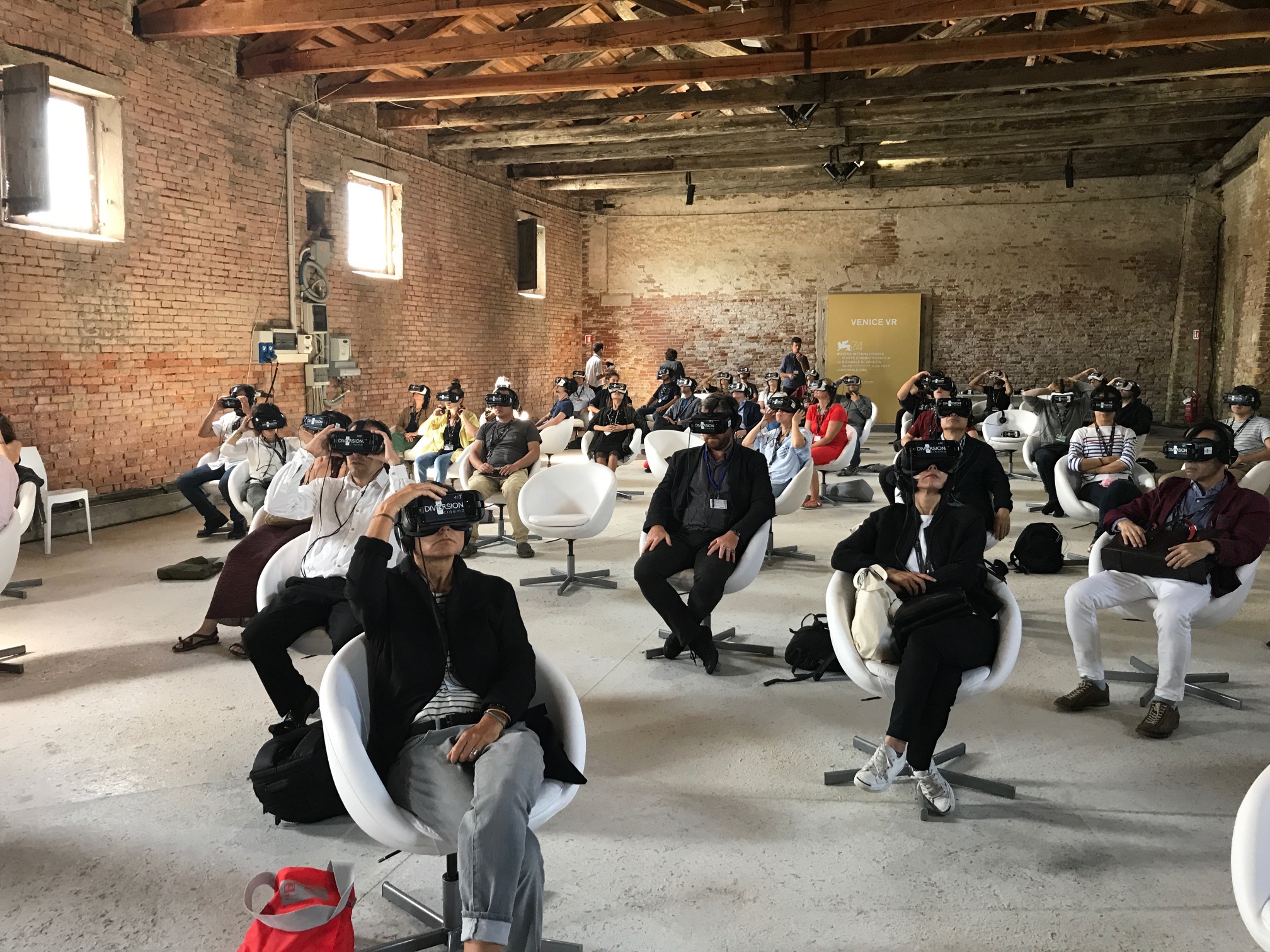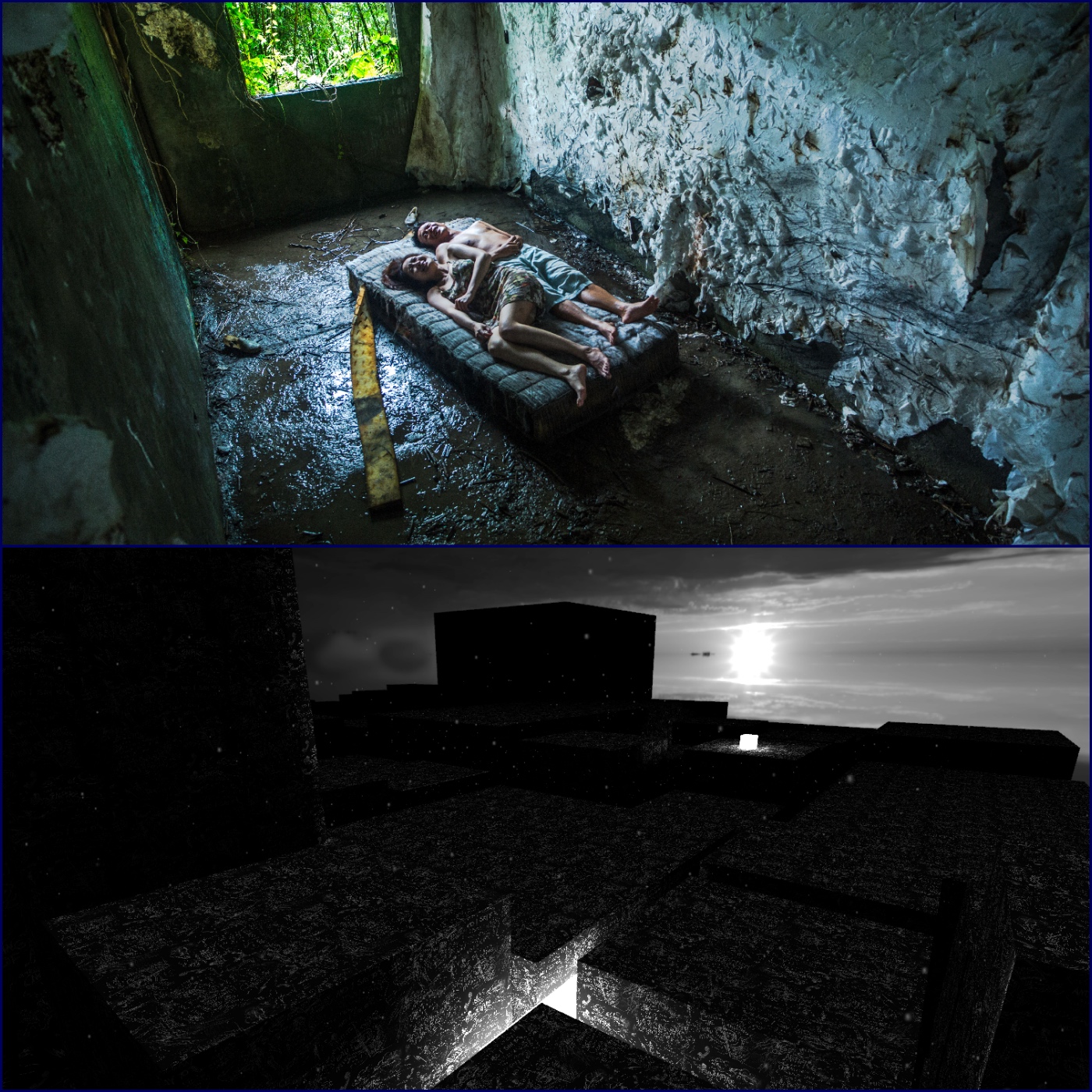
- Festivals
Virtual Reality – Finally Coming of Age in Venice?
This year marks the first time a major film festival has included a full-fledged section devoted to Virtual Reality as a proper cinematic form. The island of San Servolo – the city’s old “Lazzaretto”, where plague-stricken Venetians were once quarantined – has been put to a rather less ominous use. The large “Venezia VR” signage on the old brick buildings, just a few meters of the Lido shore, is the cue: the old hospice houses the first ever Virtual Reality competition here, or, for that matter, anywhere. The 18 fully immersive titles will be judged by a jury chaired by John Landis (his 3D film on the making of Michael Jackson’s Thriller is also at the festival) which will award a Best VR Film, Best VR Creativity and a Special Jury prize.
Not that VR hasn’t been an increasing presence at the world’s top fests – from the Next exhibits in Sundance to last year’s life of Christ feature (Jesus), which was shown right here in Venice. But that film really was pretty pedestrian and still had the feel of a tech demo, something you might expect to see, say, on the floor of a Las Vegas trade show like NAB or Cinemacon.
This edition of Venice marks a big leap forward – or so at least hope filmmakers experimenting with the medium. Things had started to change in Cannes with Alejandro González Iñárritu’s installation of Carne y Arena in which the visor-wearing viewer (user?) was subjected to the simulated, first-person experience of illegally crossing the US-Mexico border. A remarkable and timely use of the technology to be sure, but by the director’s own admission experience was still the operative word.
In the opening press conference here, Biennale Chairman Paolo Baratta answered skeptical questions, pointing journalists to the grand art exhibit showing concurrently across the lagoon. The Art Biennale is, he contended, proof of the evolution the language of modern art has undergone in recent decades: a radical formal and aesthetic transformation which has brought it from painting to multimedia, performance and conceptual installations. Why not then, he asked, imagine a similar evolution in the language and form of film?

As reasonable as that may sound it is to some extent a fallacy since a better analogy for film might be literature. Films are, after all, more like novels than pictures of installations. In other words, they are a narrative medium which presupposes the manipulation of perception through an author’s artifice. That includes the authorial control of the point of view by the filmmaker. Virtual Reality, in theory, changes that mechanism transferring a measure of control to the user itself. A VR “film” is meant to never duplicate the same experience as each viewer controls his/her own point of view.
While that has obvious and already wide applications in video gaming or immersive environments, like the Second Life community, it is a lot less clear what this entails for film narrative. At this stage, in fact, what viewers are able to do is limited pretty much to turning their heads (or the special swiveling chairs) to direct their gaze to different parts of the image they are immersed in; in other words, to decide where and when to pan. It’s not possible to actually move through the action or interact with characters.
It is not clear how this “looking around” mode of experiencing a narrative medium actually alters that perception of the story. The film maker still has to “set the stage” choose the location and place characters within that space while relinquishing traditional editing – there are no more establishing shots and close-ups, no more cutaways or montages, in other words, the century old syntax of film and story. The immersive quality of VR allows for – or forces – a new kind of intimacy with the characters, the action and the atmosphere that also make a film.

Scenes from the VR works The Deserted (top) and La Camera Insabiatta.
venice film festival
The Lazzaretto was full of fascinating experiments which we would still hesitate to call films, work that resides in a gray area between contemporary art installations and traditional narratives. Some like Laurie Anderson and Huang Hsin-Chien’s La Camera Insabbiata more closely related to the former. Others like Tsai Ming-Liang’s The Deserted, a remarkable 55-minute long meta-narrative about a man haunted by ghosts, taking steps towards the latter. Fascinating but still early chapters in a book that is still being written.

